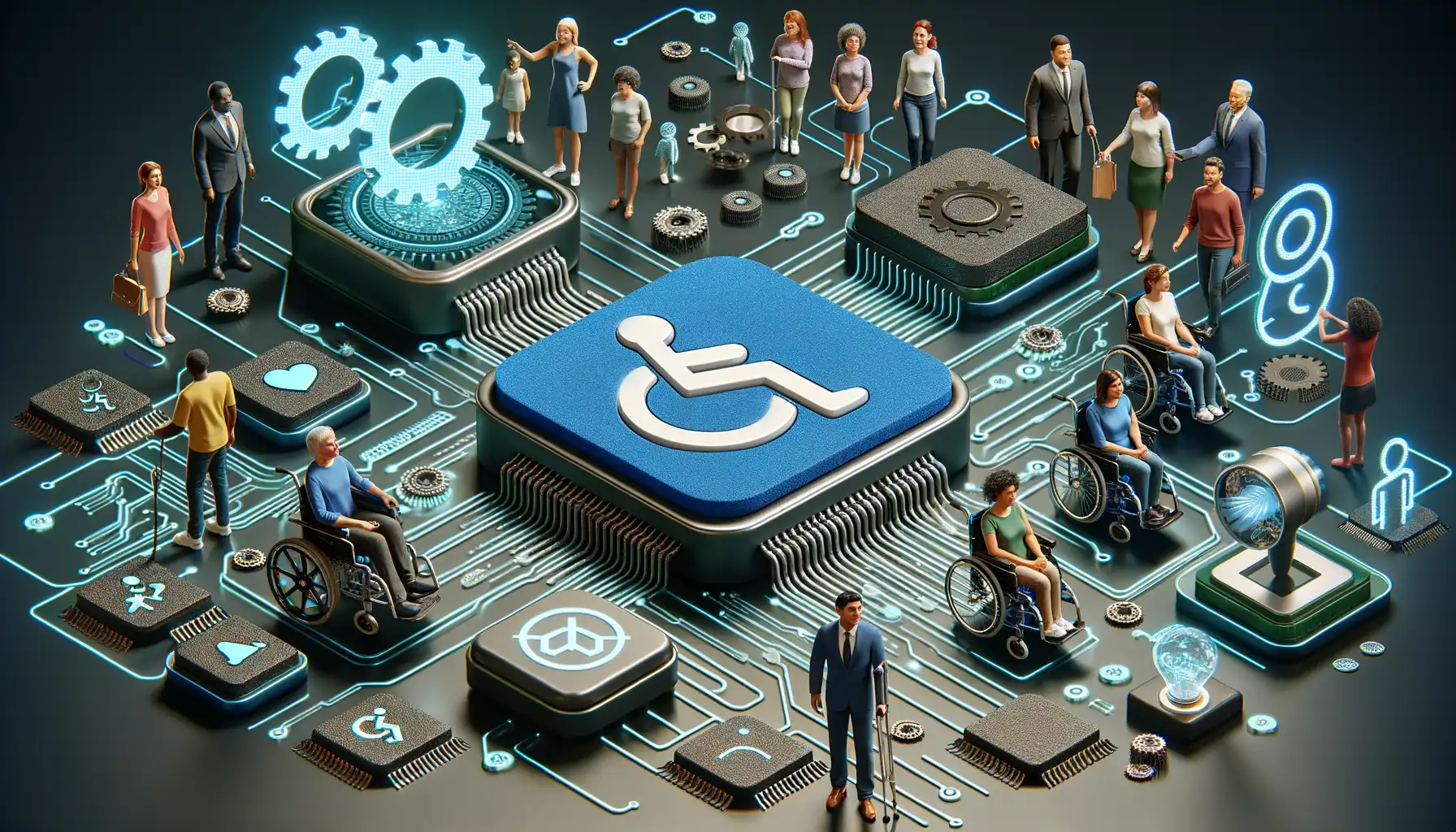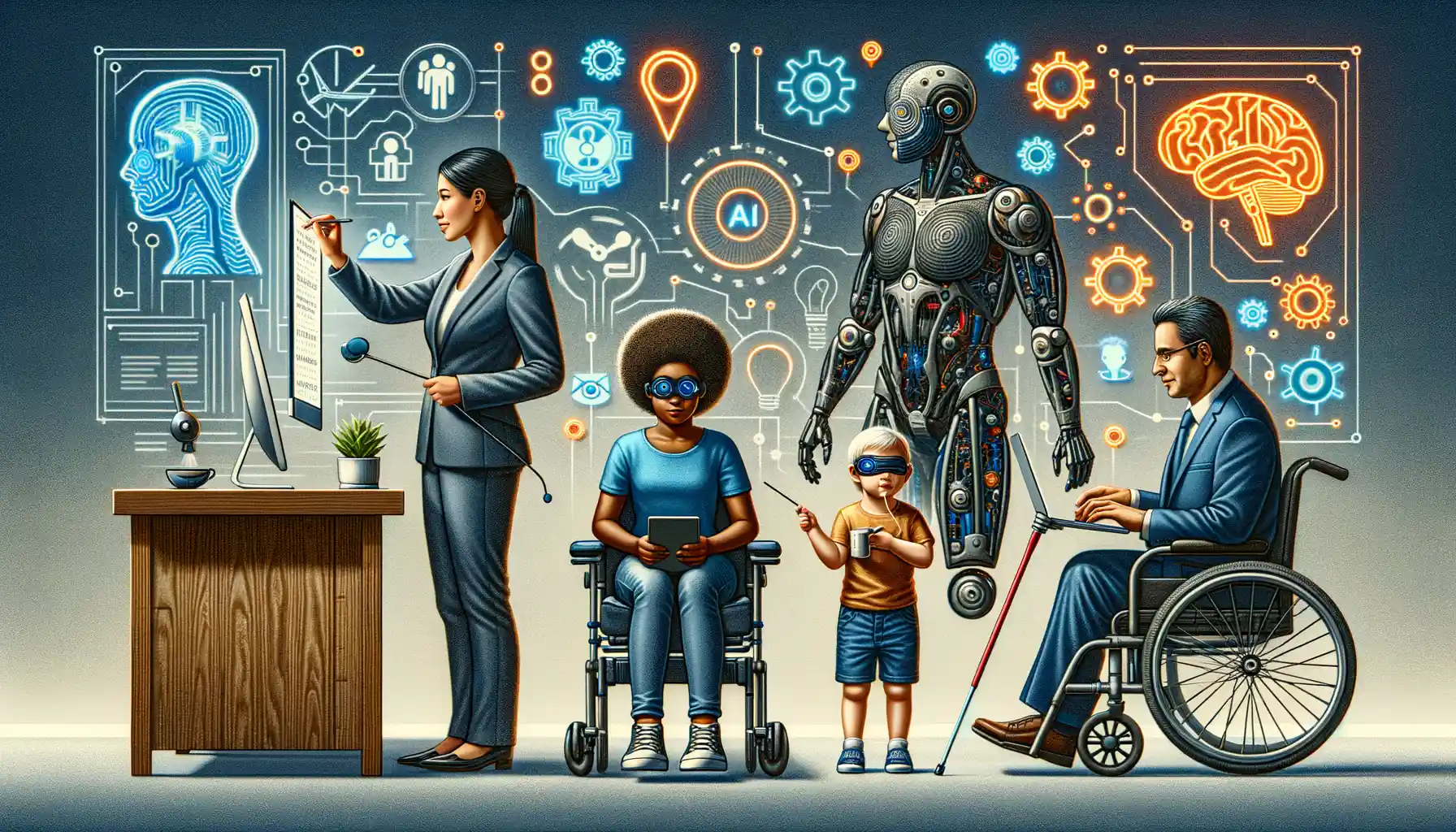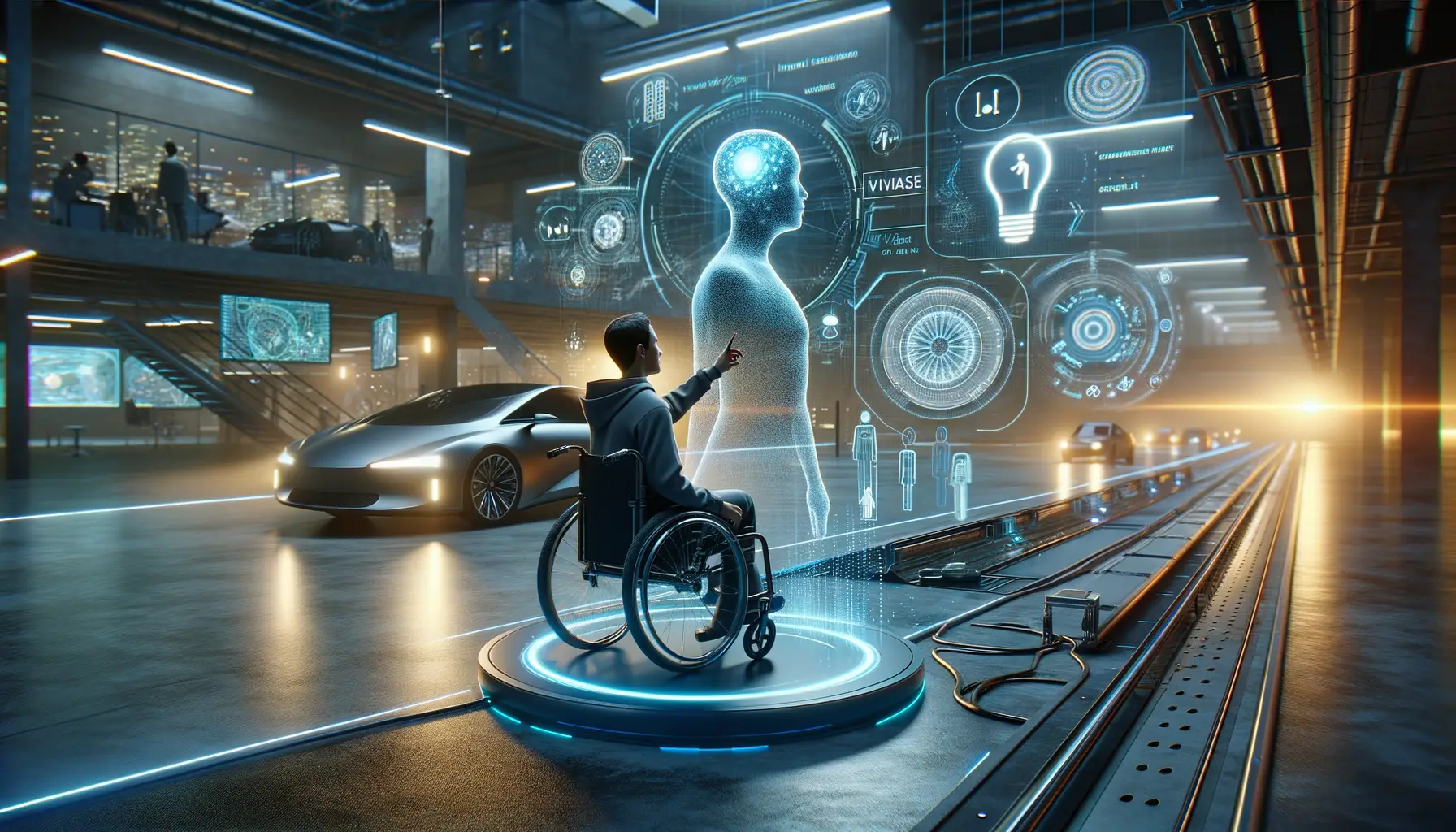Introduction to AI and Mobile App Accessibility
Imagine opening a mobile app, only to find yourself stuck in a maze of buttons without labels or text too small to read. For millions of people with disabilities, this isn’t just a bad user experience—it’s a daily reality. But here’s the good news: artificial intelligence (AI) is stepping in as a game-changer, transforming mobile app accessibility in ways you’ve probably never imagined.
The Intersection of AI and Accessibility
At its core, AI is like a supercharged assistant, capable of interpreting the world in ways humans might not always catch. Through tools like voice recognition, real-time text transcription, and even image analysis, AI has the power to make apps more inclusive. Think about it: a visually impaired user can now “see” their screen through text-to-speech technology, while someone with limited mobility enjoys the ease of voice commands to navigate complex app menus.
And it doesn’t stop there. AI turns what once seemed impossible into everyday magic:
- Captions generated in seconds for videos and calls.
- Real-time translation for users facing language barriers.
- Screen readers that actually understand context—not just words.
Accessibility is no longer an afterthought; it’s becoming the beating heart of app design, thanks to AI’s ever-expanding capabilities.
Understanding Low Frequency Use Cases

What Are Low Frequency Use Cases, Really?
Let’s set the scene: imagine you’ve just built an incredible mobile app. Sleek design, intuitive navigation, the works. But here’s the curveball—what about users who rely on accessibility features for rare yet critical needs? These are your low frequency use cases. They’re not the everyday, obvious challenges like screen readers or voice commands. No, this is a deeper dive.
Think: accommodating someone with temporary impairments (a broken wrist, perhaps?), or adapting to unique cultural contexts. Ever considered how your app might handle someone trying to navigate it in total silence, unable to use audio queues? These edge-case scenarios don’t pop up daily, but when they do, they’re make-or-break.
How These Scenarios Play Out
Here’s the reality of low frequency use cases: they’re like the unexpected storms. Rare, but when they hit, unprepared apps leave users stranded. Some examples?
- A user with color blindness needing distinct contrast options during peak sunny hours outdoors.
- Someone recovering from surgery who can only use voice commands—but they have a thick regional accent.
- Users in rural areas with patchy internet access needing offline mode to still interact seamlessly.
These aren’t just edge stories; they’re reminders that innovation happens in the details.
AI-Based Solutions for Addressing Accessibility Challenges

Breaking Barriers with AI: A New Era in Accessibility
Imagine navigating a mobile app as someone with low vision, hearing impairments, or motor challenges. Frustrating, right? Now, picture your app transforming into a personal assistant—guiding, translating, adjusting itself—thanks to the magic of AI-based accessibility solutions.
AI isn’t just a buzzword; it’s an enabler. Take image recognition, for example. For users who are visually impaired, AI scans and describes images in real-time, turning static photos into vivid stories. Meanwhile, Natural Language Processing (NLP) reads and analyzes text aloud, even translating it into multiple languages with ease. This isn’t just technology—it’s empowerment.
- Speech-to-text tools enable seamless communication for hearing-impaired individuals, transforming conversations into readable text on the fly.
- Gesture recognition apps give users with limited mobility a means to interact more naturally—think swipes replaced by simple nods or hand waves.
Integrating these solutions doesn’t just help underserved users—it transforms the way we all interact with apps. After all, true innovation considers every experience, every voice, and every challenge. Apps aren’t just tools—they’re lifelines when inclusive design meets the power of AI-driven technology.
Benefits of Enhancing Accessibility with AI

Transforming User Experiences
When you integrate AI-driven accessibility features into your mobile app, you’re not just improving the experience—you’re opening doors. Picture someone with a visual impairment finally being able to navigate your app effortlessly, thanks to an AI-powered screen reader. That’s more than functionality; that’s empowerment.
With AI, even low-frequency use cases become impactful moments of inclusion. Think about users with rare conditions like colorblindness or auditory processing challenges—problems that traditional design often overlooks. AI tools can dynamically adjust color schemes or enhance audio clarity, creating a personalized, intuitive interface that feels tailor-made for every individual.
- Real-Time Adaptability: AI doesn’t sleep—it adapts on the fly, ensuring accessibility features work whenever, wherever they’re needed.
- Breaking Language Barriers: Multi-language support powered by AI ensures your content resonates, whether your user speaks English, Mandarin, or Swahili.
Building Loyal Connections
Accessibility isn’t just a checkbox; it’s a bridge to deeper human connections. Consider what happens when a user with a disability realizes your app cares about them on a personal level. You’re not just offering an app—you’re fostering trust, loyalty, and even emotional attachment. And when users feel seen, they stay.
Future Trends and Innovations in AI for Accessibility

Revolutionizing Accessibility Through Predictive AI
Imagine a world where your mobile app anticipates your needs before you even realize them. Thanks to innovations like predictive AI, this vision is no longer science fiction—it’s quickly becoming reality. For instance, emerging algorithms can detect subtle patterns in user behavior and adapt interfaces dynamically. Have you ever struggled with those tiny font sizes or impossible-to-tap buttons? With context-aware AI, elements like font scale, contrast, and layout can shift on the fly, offering a seamless experience tailored just for you.
Here’s what’s on the horizon:
- Emotion-sensitive tech: Apps that “read” your mood through voice or facial cues and adjust their tone or functionality accordingly.
- Gesture recognition: Say goodbye to rigid touch controls—future apps may respond to nods, eye movements, or even specific hand gestures!
AI as Your Accessibility Sidekick
Let’s not forget how far voice-controlled AI assistants like Siri and Google Assistant have come. But they’re about to level up. Future iterations might not only follow commands but also offer proactive support. Picture this: you’re navigating a map app, and your assistant whispers, “Hey, there’s a subway station nearby with an elevator.” Or imagine being alerted about potential hazards in real-time when you’re walking in unfamiliar terrain.
The fusion of computer vision with wearables is also shaking things up. A smart device could describe your surroundings like a helpful guide. We’re stepping into an era where technology doesn’t just remove barriers—it anticipates and obliterates them.
